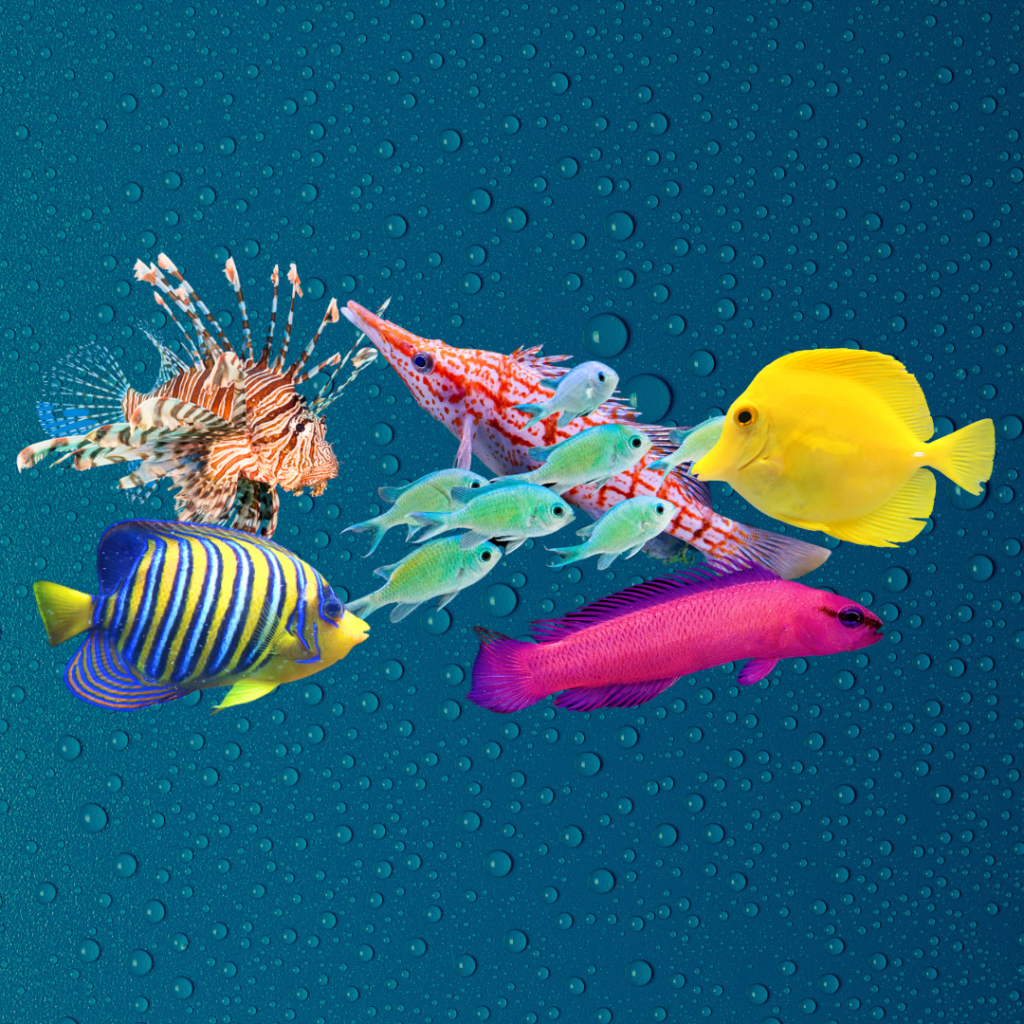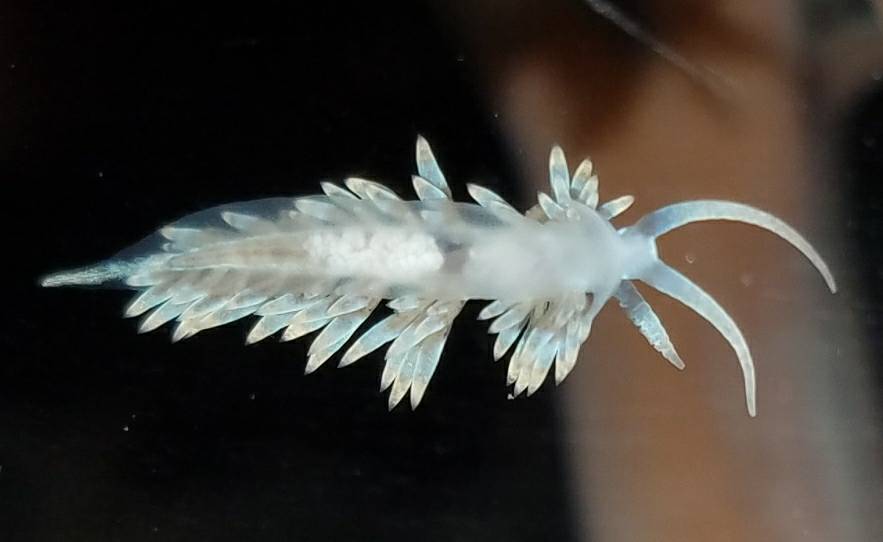A 100-gallon saltwater aquarium offers an incredible opportunity to create a diverse and vibrant underwater ecosystem. With so many beautiful fish species to choose from, it can be challenging to decide which ones are the best fit for your tank. In this comprehensive guide, we will delve into our favorite saltwater fish for your 100-gallon tank.
Small Fish for a 100 gallon saltwater tank
Small-sized fish are perfect for adding movement, color, and activity to your 100-gallon tank. They usually have peaceful temperaments, allowing them to coexist with other fish species without causing much disruption.
Because of their small size, they can also be kept in larger groups, adding to the overall appeal and biodiversity of your aquarium.
- Clownfish: Iconic and colorful fish, known for their symbiotic relationship with anemones.
- Chromis: Small, schooling fish with shimmering appearance and peaceful nature.
- Blennies: Curious bottom dwellers with unique patterns, colors, and expressive eyes.
- Gobies: Small, torpedo-shaped fish with large eyes and various colors and patterns.
Related: Best Small Saltwater Fish For a Nano Tank
Clownfish
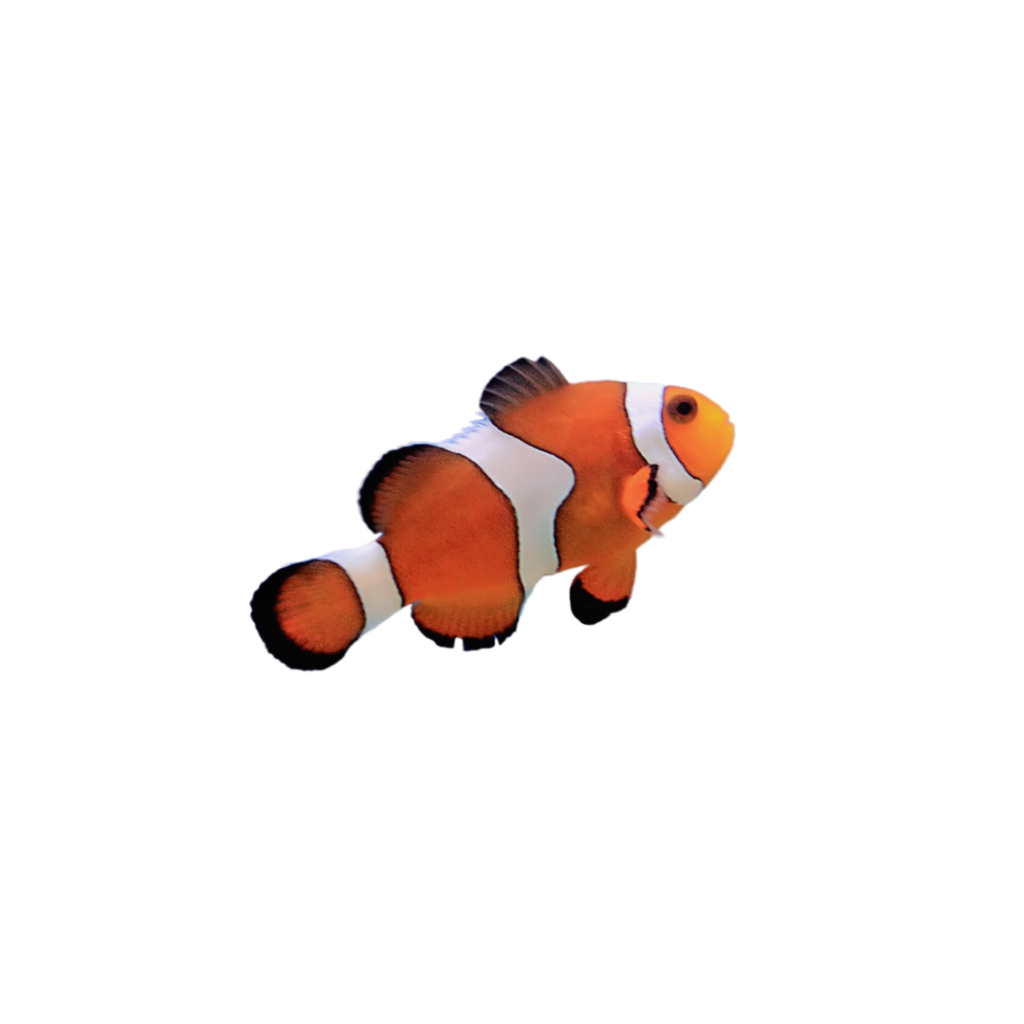
Clownfish are endearing, small, and brightly colored fish with distinct white stripes. Known for their symbiotic relationship with sea anemones, they make their homes among the anemones’ tentacles, which provide protection from predators.
The clownfish, in turn, drives away polyp-eating fish, protecting the anemone. The most well-known species is the orange-and-white Ocellaris Clownfish, popularized by the movie “Finding Nemo.”
Behavior: Clownfish are peaceful and have an interesting social structure, living in groups led by a dominant female.
Diet: Omnivore – feed a mix of meaty foods (like mysis shrimp and brine shrimp) and herbivore pellets or flakes. Hardiness
Reef compatibility: Yes, in my experience clown fish are some of the most reef safe fish out there
Size: 2-4 Inches
Stocking recommendation: 2-4 pairs in a 100-gallon tank, depending on the species.
Chromis
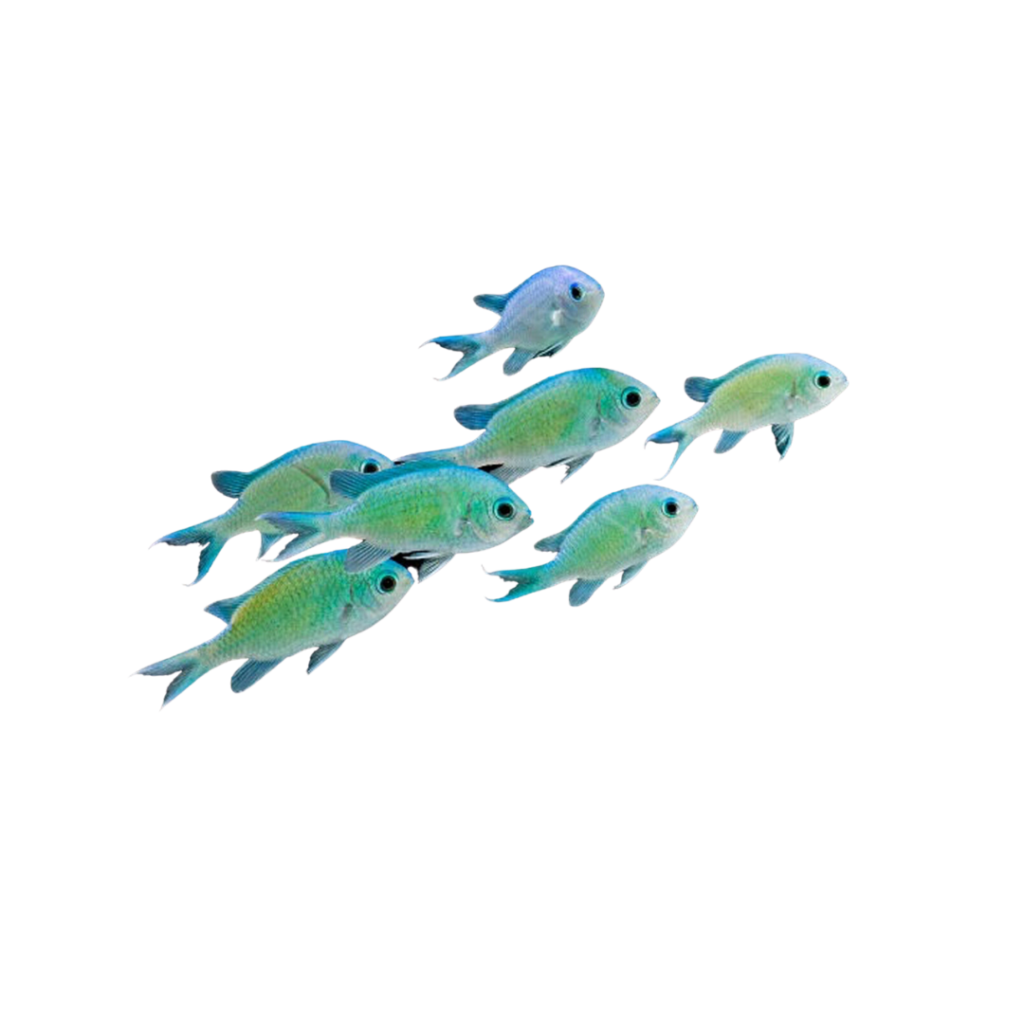
Chromis are small, schooling fish belonging to the Pomacentridae family, closely related to damselfish. They come in a variety of colors, such as the vibrant Blue-green Chromis and the Black-bar Chromis, which has a black bar across its eyes.
These fish are known for their peaceful nature and shimmering appearance.
Behavior: Chromis are schooling fish and prefer to be kept in groups of five or more. They are generally peaceful and can coexist with a variety of tankmates. They are active swimmers and will often dart through the water column in a synchronized manner.
Diet: Omnivore – feed a mix of meaty foods, like mysis shrimp and brine shrimp, and herbivore pellets or flakes.
Hardiness level: Beginner
Reef compatibility: Yes
Size: 2-4 Inches
Stocking recommendation: 5-10 Chromis in a 100-gallon tank, depending on the species and tankmates.
Related: The Hardiest Saltwater Fish: Top Picks From Our Experts
Blennies
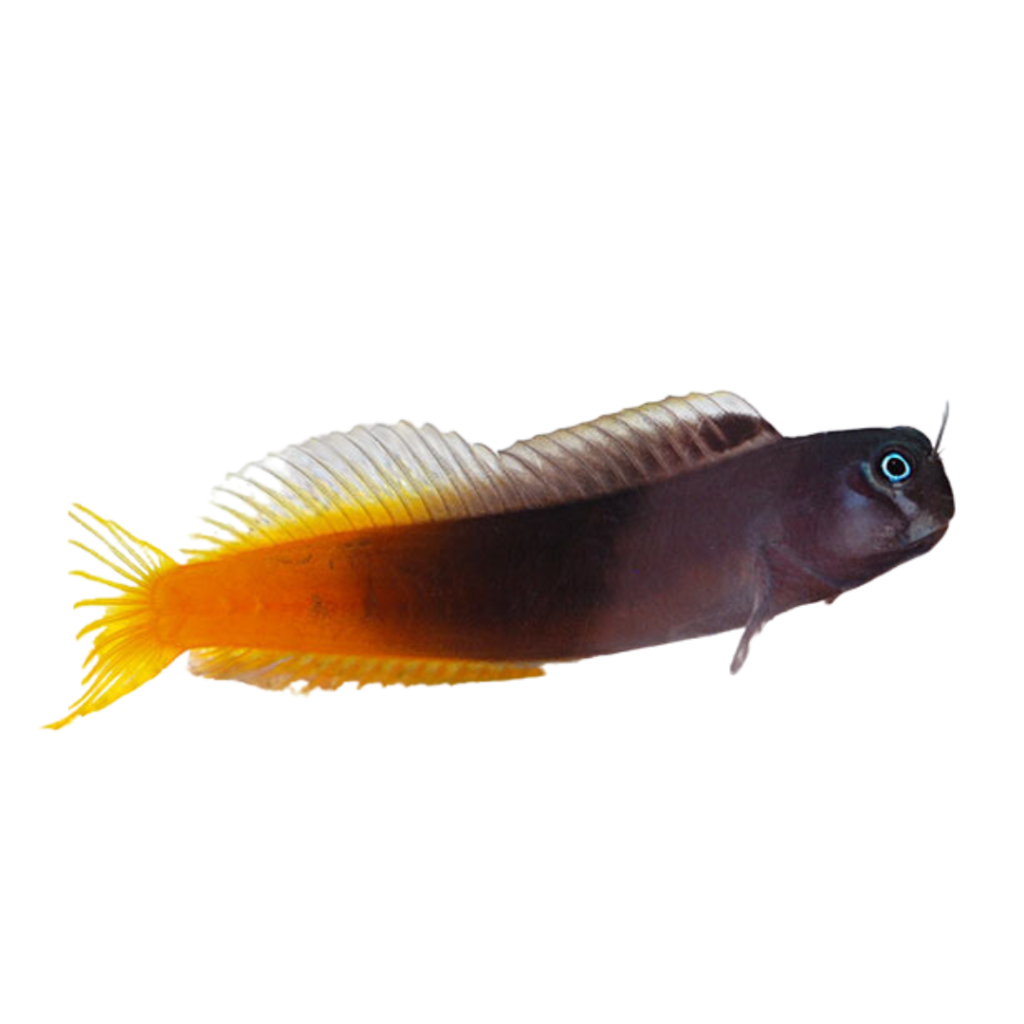
Blennies are small, elongated fish that often have unique patterns and colors. They are bottom dwellers, known for their inquisitive nature and ability to perch on rocks using their pelvic fins.
Blennies also have expressive, large eyes that add to their charm. Some popular species include the Bicolor Blenny, with its bold, two-toned coloration, and the Lawnmower Blenny, known for its ability to control algae growth in the aquarium.
Related: The 19 Best Algae Eating Fish + Invertebrates for Saltwater Tanks
Behavior: Blennies are generally peaceful and make excellent tankmates for most reef fish. They can be territorial with other blennies, so provide plenty of hiding spots and territory.
Diet: Omnivore or herbivore, depending on the species – feed a mix of meaty foods, herbivore pellets or flakes, and algae.
Hardiness level: Beginner to intermediate
Reef compatibility: Yes bennies are reef safe
Size: 1-5 Inches
Stocking recommendation: 1-3 blennies in a 100-gallon tank, depending on the species and tankmates.
Gobies

Gobies are small, bottom-dwelling fish that come in a wide range of colors and patterns. They have a characteristic torpedo-shaped body and large, expressive eyes.
Some popular species include the Yellow Watchman Goby, the Neon Goby, and the Clown Goby, known for its playful behavior and ability to perch on coral branches (I noticed some of my corals become unhappy when my gobies perch on top of them)
Behavior: Gobies are generally peaceful and can coexist with most reef fish making them a great fish for a 100 gallon tank. Some species form symbiotic relationships with pistol shrimp, creating a fascinating dynamic to observe in your aquarium.
Diet: Carnivore or omnivore, depending on the species – feed a mix of meaty foods, such as mysis shrimp, brine shrimp, and small crustaceans, along with herbivore pellets or flakes for omnivorous species.
Hardiness level: Beginner to intermediate
Reef compatibility: Yes
Size: 1-6 Inches
Stocking recommendation: 1-3 gobies in a 100-gallon tank, depending on the species and tankmates.
Related: 11 Best Low Maintenance Fish For a Saltwater Tank
Best Medium sized Fish for 100 gallon tank:
Medium-sized fish offer an excellent balance between size and compatibility with other tank inhabitants. They often display unique behaviors and patterns, making them interesting additions to your aquarium.
These fish can serve as the focal point of your tank, while still being able to coexist with smaller and larger species alike.
- Tangs: Active, brightly colored fish with an oval-shaped body, ideal for algae control.
- Butterflyfish: Unique, disk-shaped fish with intricate patterns and elongated snouts.
- Wrasses: Diverse fish with bright colors, distinctive swimming patterns, and unique behaviors.
- Pseudochromis (Dottybacks): Streamlined, elongated fish with vibrant colors and territorial nature.
- Hawkfish: Perch-like fish with striking colors and unique patterns, known for their curious nature and ability to rest on rocks and corals.
Tangs
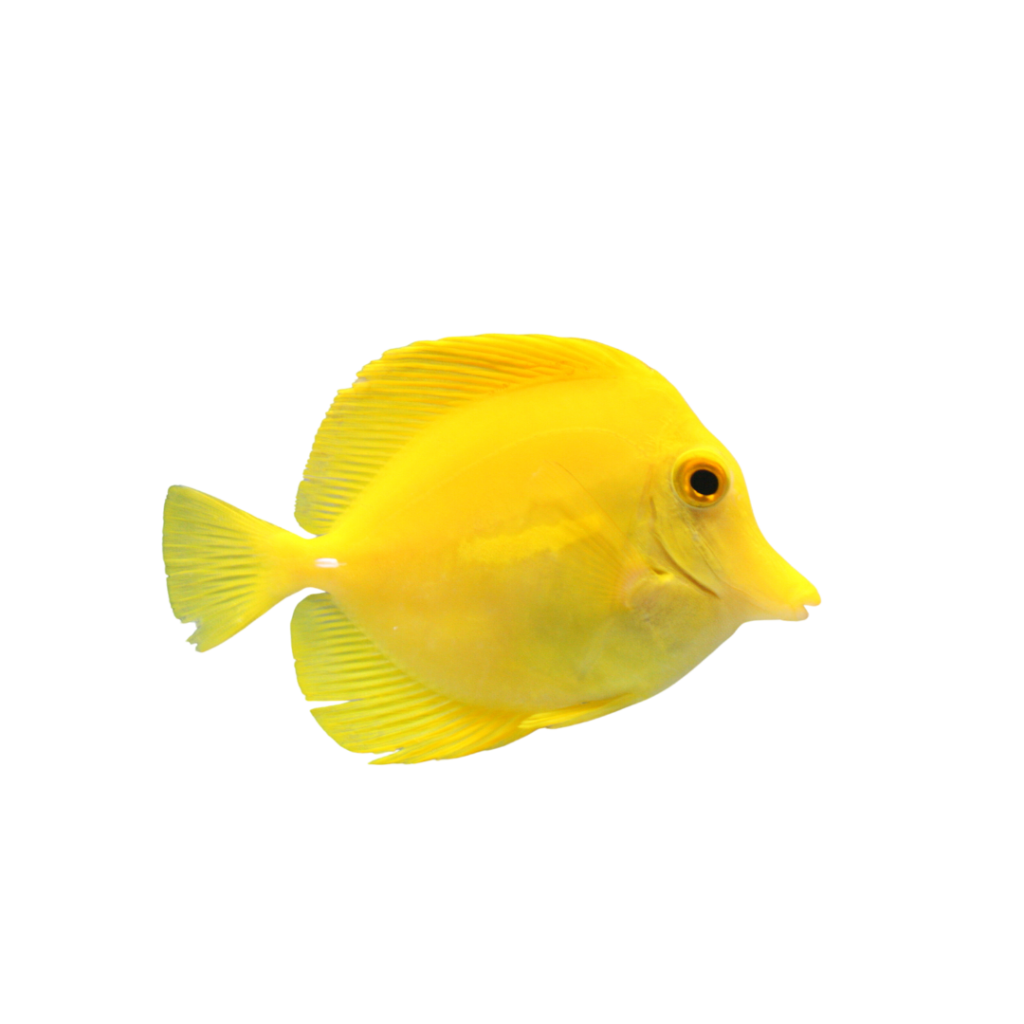
Tangs are a group of vibrant fish belonging to the Acanthuridae family, which also includes Surgeonfish and Unicornfish. Tangs are some of the best fish for a 100 gallon tank, as they are known algae eaters, keeping your tank free of various types of algae.
Tangs come in various colors, like the bright yellow of the Yellow Tang, the deep blue of the Blue Tang (also known as the Regal Tang or Hippo Tang), and the royal hues of the Purple Tang.
Behavior: Tangs are active swimmers and can be territorial, particularly with other tangs. They tend to be more aggressive during feeding times. Providing ample space, hiding spots, and a well-planned aquascape can help reduce aggression and promote a peaceful environment.
Diet: Herbivore – feed primarily on algae and herbivore pellets or flakes. Supplement their diet with fresh vegetables like nori, spinach, and lettuce. I feed my tang green seaweed every other day and he absolutely loves it.
Hardiness level: Intermediate
Reef compatibility: Yes
Size: 6-12 inches
Stocking recommendation: 2-3 tangs of different species in a 100-gallon tank, provided there’s ample space and hiding spots.
Butterflyfish

Butterflyfish are part of the Chaetodontidae family, known for their unique appearance, with a thin, disk-shaped body and elongated snout. They often have intricate patterns and bright colors that can change depending on their mood or environment.
Some iconic species include the Yellow Longnose Butterflyfish, with its bright yellow color and elongated snout, and the Copperband Butterflyfish, known for its alternating copper and white bands.
Behavior: Butterflyfish are generally peaceful and prefer to swim in pairs or small groups. They are diurnal, meaning they are active during the day and will spend their time exploring the tank and searching for food.
Diet: Omnivore or carnivore, depending on the species – feed a mix of meaty foods, herbivore pellets or flakes, and specialized foods, such as mysis shrimp, brine shrimp, or small crustaceans. Some Copperband butterfly fish have also been known to eat Aiptaisa anemones
Hardiness level: Intermediate to advanced
Reef compatibility: Varies by species; some may nip at corals and invertebrates
Size: 4-8 Inches
Stocking recommendation: 1-2 pairs of butterflyfish in a 100-gallon tank, depending on the species and tankmates.
Wrasses
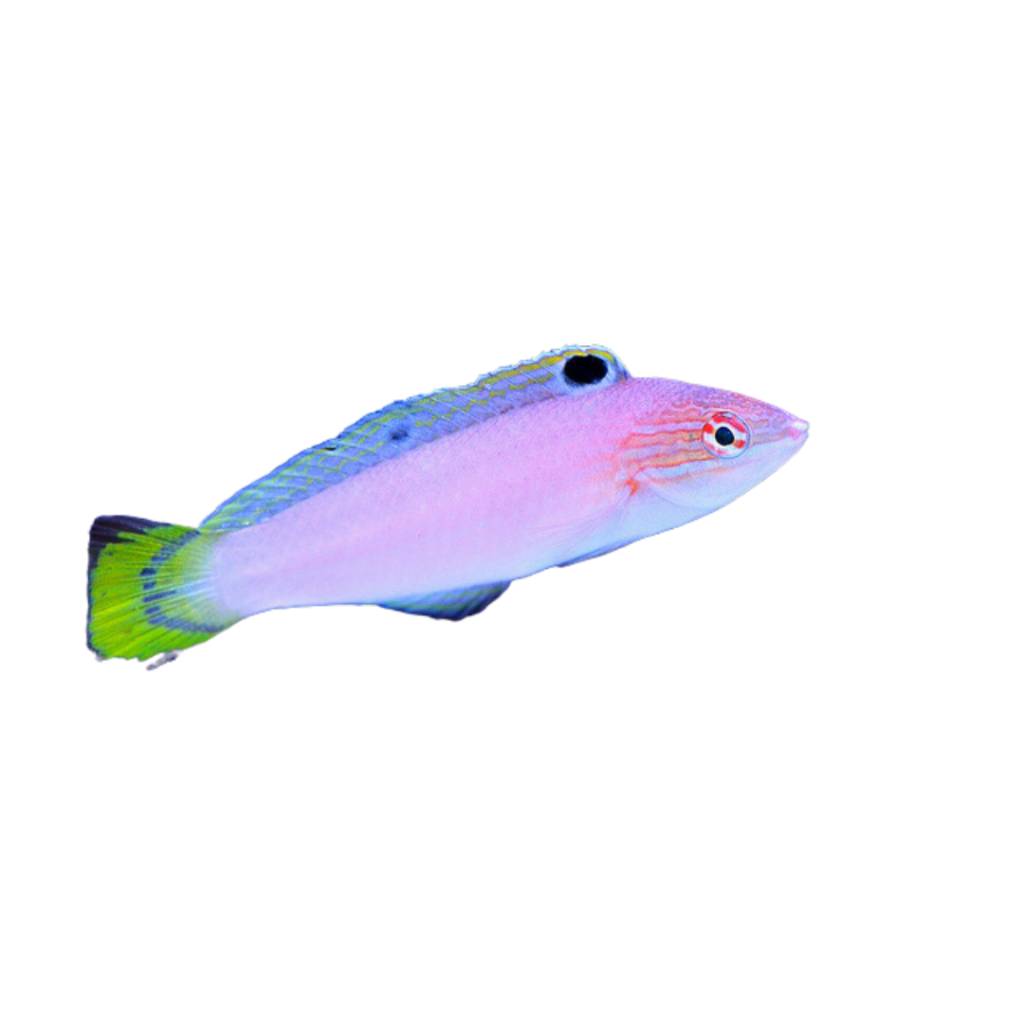
Wrasses are another great addition to your 100 gallon tank. They are a diverse group of fish, known for their bright colors and distinctive swimming patterns. They come in various sizes and colors, such as the colorful Fairy Wrasses with their intricate patterns and the larger, more aggressive Melanurus Wrasse.
Wrasses have a unique body shape, with a pointed snout and a tail that tapers to a fine point.
Behavior: Wrasses can range from peaceful to semi-aggressive, depending on the species. Some are active swimmers, while others prefer to burrow in the sand. Many wrasses display unique behaviors, such as leaping out of the water to escape predators or burying themselves in the sand at night for protection.
My yellow wrasse decided to bury himself in the sand for a week as soon as I put him into my tank
Diet: Carnivore or omnivore, depending on the species – feed a mix of meaty foods, such as mysis shrimp, brine shrimp, and small crustaceans, along with herbivore pellets or flakes for omnivorous species.
Hardiness level: Beginner to advanced, depending on the species
Reef compatibility: Varies by species; some may nip at corals and invertebrates
Size: 2-12 Inches
Stocking recommendation: 1-3 wrasses in a 100-gallon tank, depending on the species and tankmates.
Related: Cheap Saltwater Fish for Your Aquarium (Beginner Friendly)
Hawkfish
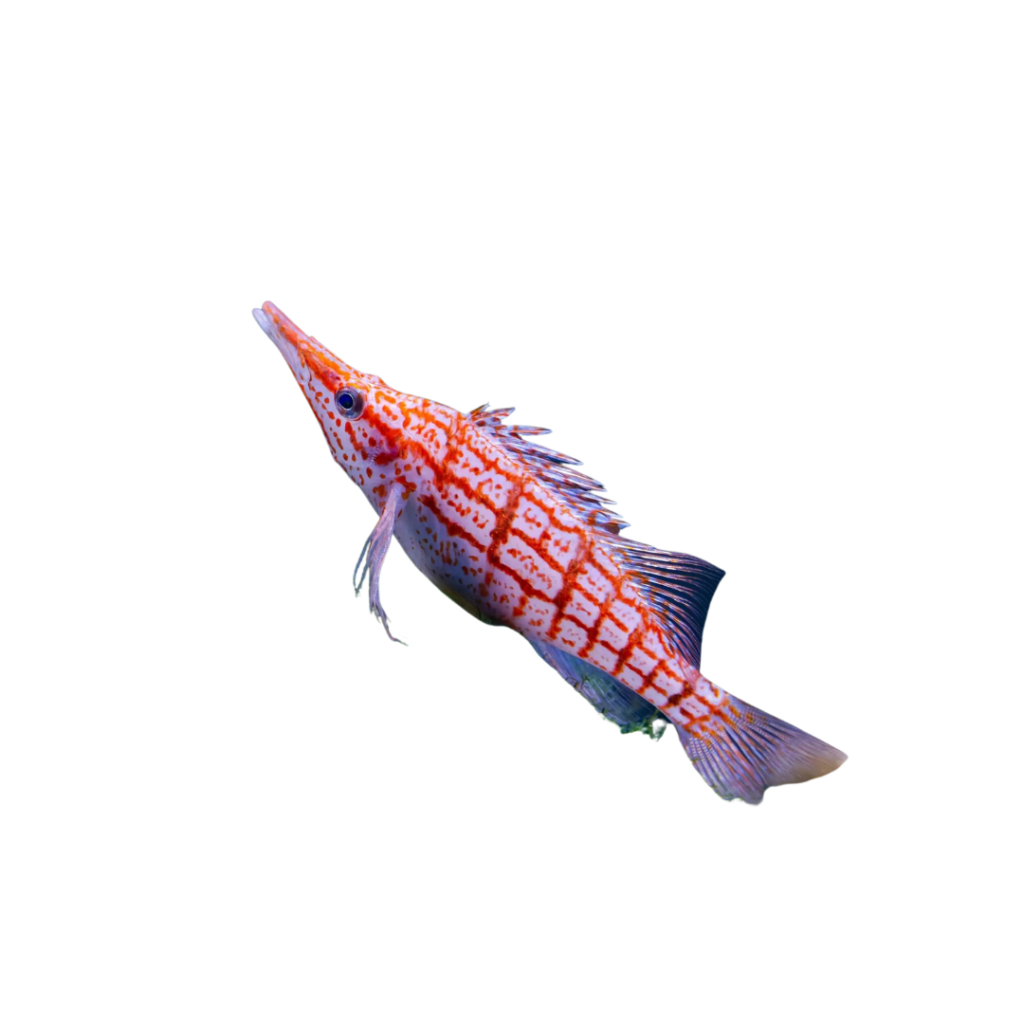
Hawkfish are perch-like fish known for their striking colors and unique patterns. They have a robust body shape and strong pectoral fins, which allow them to rest on rocks and corals while observing their surroundings.
Some popular species include the Longnose Hawkfish, with its vibrant red and white coloration, the Flame Hawkfish, known for its bright red hue, and the Falco’s Hawkfish, characterized by its red and white bands.
Behavior: Hawkfish are curious and tend to watch their environment intently. They are generally peaceful towards other fish species, but they may prey on smaller crustaceans and ornamental shrimp. Providing plenty of hiding spots and territory can help keep them content and reduce the risk of predation on smaller tankmates.
Diet: Carnivore – feed a diet of meaty foods, such as mysis shrimp, brine shrimp, and finely chopped seafood.
Hardiness level: Beginner to intermediate
Reef compatibility: Yes, but be cautious with smaller invertebrates and fish
Size: 1-3 Inches
Stocking recommendation: 1 Hawkfish in a 100-gallon tank, depending on the species and tankmates.
Pseudochromis (Dottybacks)
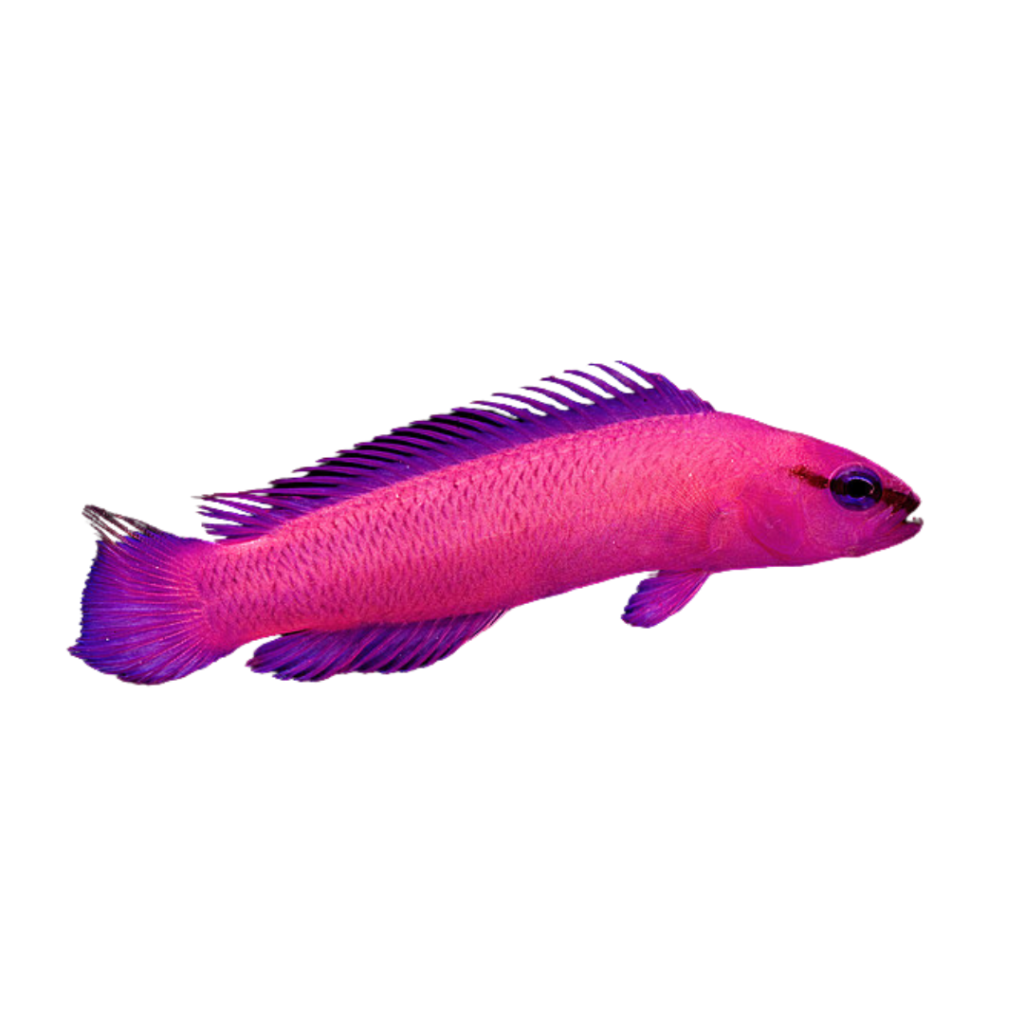
Pseudochromis, or Dottybacks, are small, elongated fish that come in a variety of vibrant colors. They have a streamlined body shape, which allows them to navigate tight spaces and crevices in search of food or shelter.
Some popular species include the Royal Dottyback, with its deep purple and electric yellow coloration, the Orchid Dottyback, known for its stunning violet hue, and the Neon Dottyback, characterized by its bright blue and purple stripes.
Behavior: Pseudochromis are generally territorial and can be aggressive towards other similar-sized fish, especially their own species. Providing plenty of hiding spots and territory can help reduce aggression. They are also known to be fast swimmers and can dart quickly in search of food or when startled.
Diet: Carnivore – feed a diet of meaty foods, such as mysis shrimp, brine shrimp, and small crustaceans.
Hardiness level: Beginner to intermediate
Reef compatibility: Yes, but be cautious with smaller invertebrates and fish
Size: 2-4 Inches
Stocking recommendation: 1-2 Pseudochromis in a 100-gallon tank, depending on the species and tankmates.
Large sized Fish:
Large-sized fish can serve as the centerpiece of your 100-gallon aquarium, adding a sense of grandeur and wonder. These fish often have striking colors and patterns, making them the stars of the show.
However, due to their size and sometimes aggressive nature, careful consideration is needed when choosing tankmates, and it’s crucial to ensure that your aquarium provides ample space for them to thrive.
- Angelfish: Graceful fish with striking colors and patterns, and semi-aggressive nature.
- Lionfish: Eye-catching fish with distinctive patterns, long fins, and venomous spines.
Angelfish
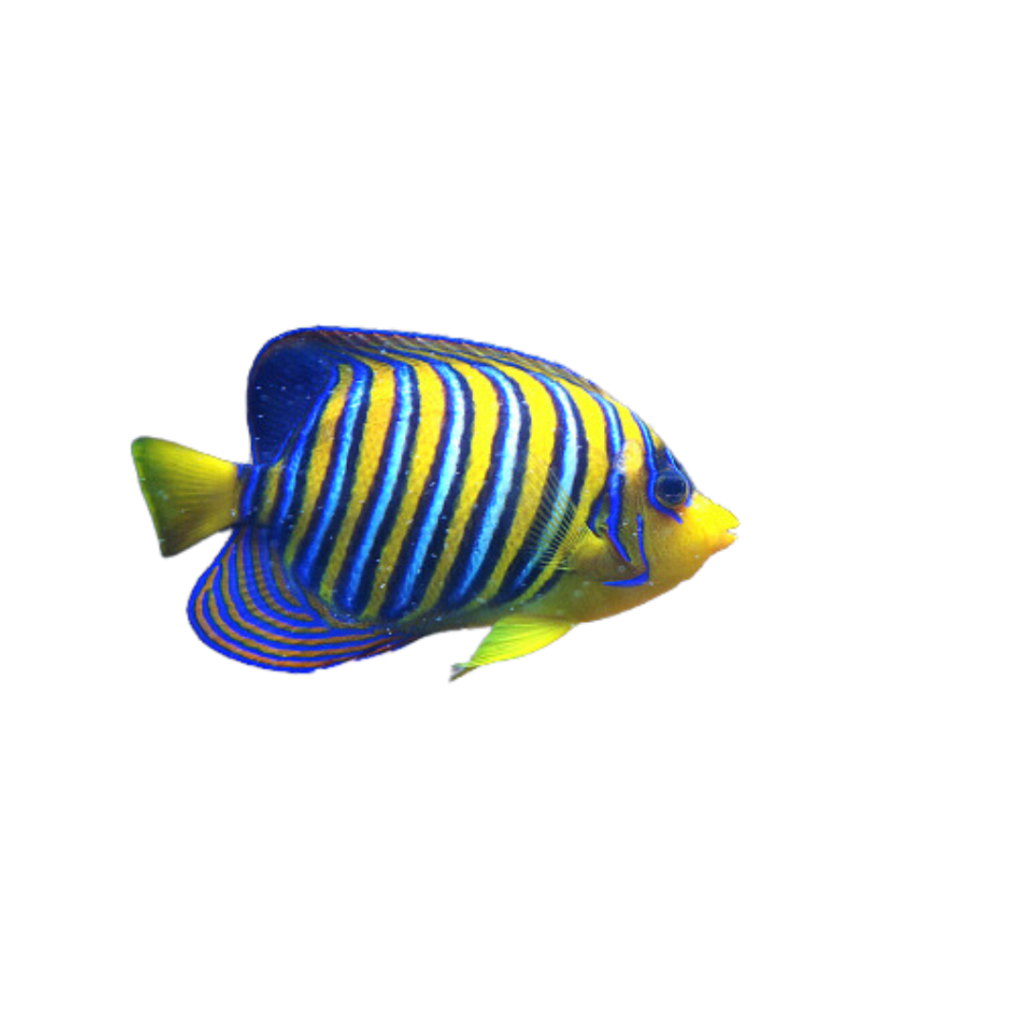
Angelfish are known for their vibrant colors and unique shape, characterized by large, triangular dorsal and anal fins. Their bodies are laterally compressed, and their mouths are small and designed for picking food off surfaces. There are many species of angelfish, including the majestic Emperor Angelfish with its striking blue and yellow pattern, the blue-and-yellow Queen Angelfish, and the smaller, colorful Coral Beauty Angelfish.
Behavior: Angelfish can be semi-aggressive and territorial, particularly as they grow larger. Juveniles often have different color patterns and can be more reclusive than adults. Ensure your tank has enough space and hiding spots for them to comfortably coexist with other fish.
Diet: Omnivore – feed a mix of meaty foods, herbivore pellets or flakes, and spirulina. Some species may require specialized diets, such as sponges, to thrive.
Hardiness level: Intermediate to advanced, depending on the species
Reef compatibility: Varies by species; some may nip at corals and invertebrates
Stocking recommendation: 1-2 angelfish in a 100-gallon tank, depending on the species and tankmates.
Lionfish
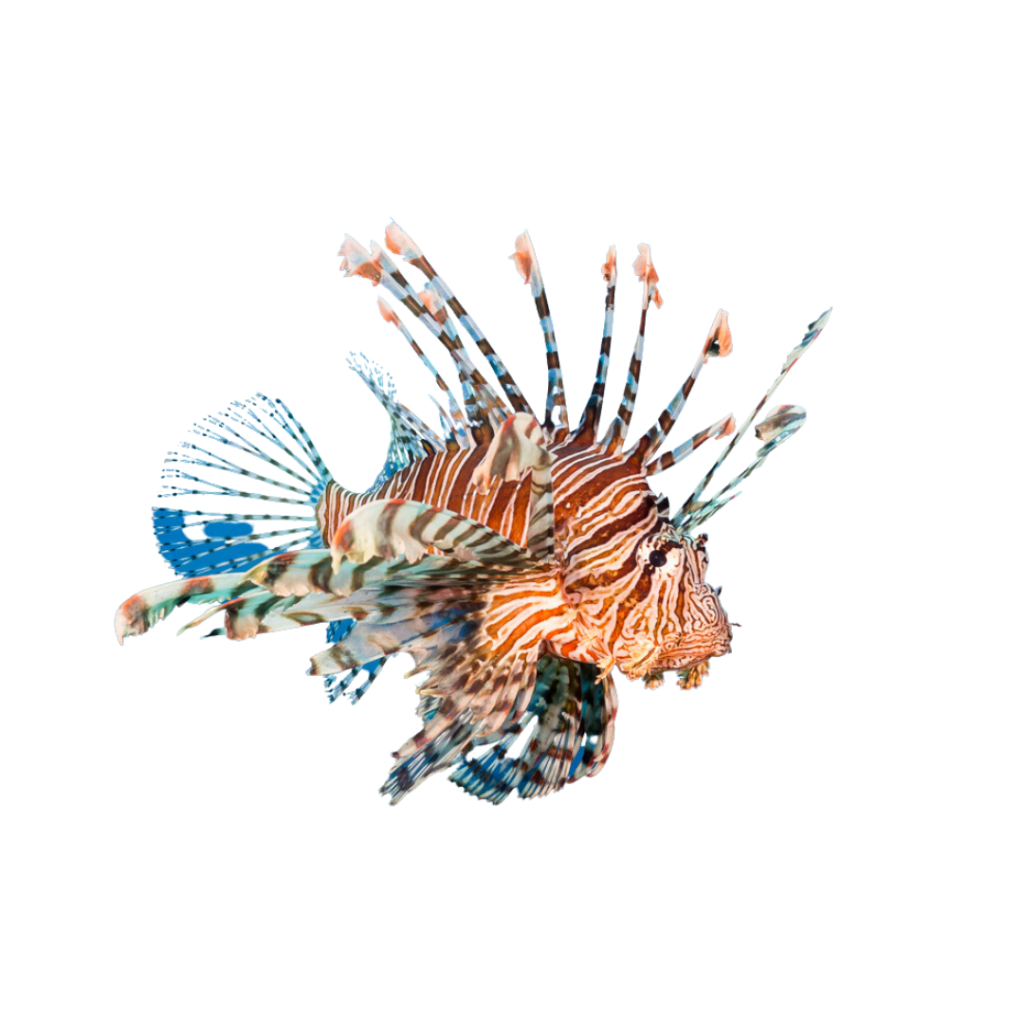
Lionfish are beautiful addition to your 100 gallon saltwater aquarium. The eye-catching fish is known for its distinctive patterns, long, flowing fins, and venomous spines. They have a broad head, large eyes, and a wide, downturned mouth.
The most popular species for home aquariums are the Red Lionfish, with its deep red color and white stripes, and the Dwarf Lionfish, which is smaller and has a variety of color patterns.
Behavior: Lionfish are generally slow-moving and prefer to spend their time hiding among rocks and corals. They are ambush predators and can be aggressive, so it’s essential to choose tankmates carefully, as they may eat smaller fish. Despite their predatory nature, they are generally peaceful with larger fish.
Diet: Carnivore – feed a diet of meaty foods such as shrimp, krill, and small feeder fish.
Hardiness level: Intermediate
Reef compatibility: Yes, but be cautious with smaller invertebrates and fish
Size: Dwarf Lionfish: 6-8 Inches, Red Lionfish: 12-15 Inches
Stocking recommendation: 1-2 lionfish in a 100-gallon tank, depending on the species and tankmates.
Best fish for 100 gallon saltwater tank
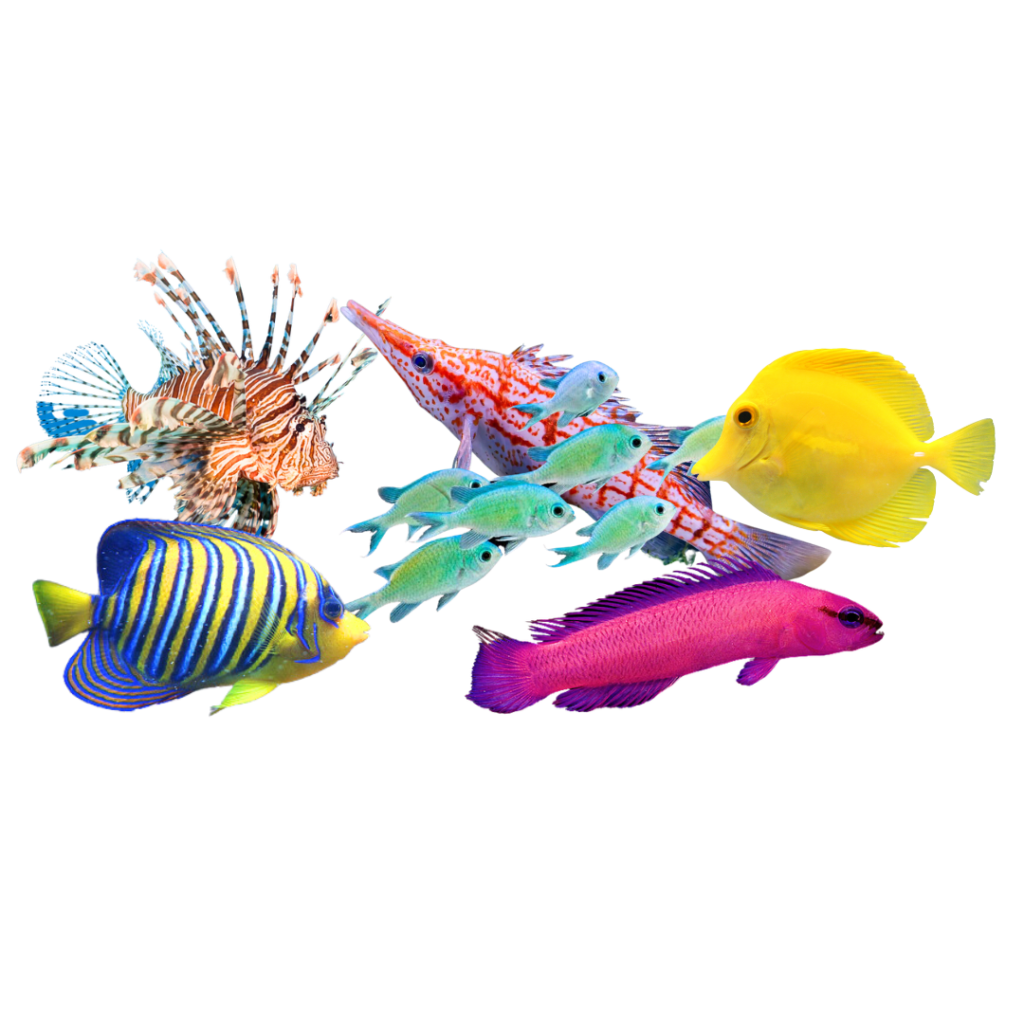
Setting up and maintaining a 100-gallon saltwater tank can be a rewarding and enjoyable experience. By selecting a diverse range of fish species such as the Royal Gramma, Clownfish, and Yellow Tang, which are compatible with one another, you can create a thriving and visually captivating marine ecosystem.
Remember to consider factors such as fish size, temperament, and dietary requirements when choosing your tank’s inhabitants, like the Flame Angelfish, Six-Line Wrasse, and Blue-Green Chromis.
With diligent care and attention, your saltwater aquarium can flourish, providing endless fascination and enjoyment for both you and your aquatic pets.

